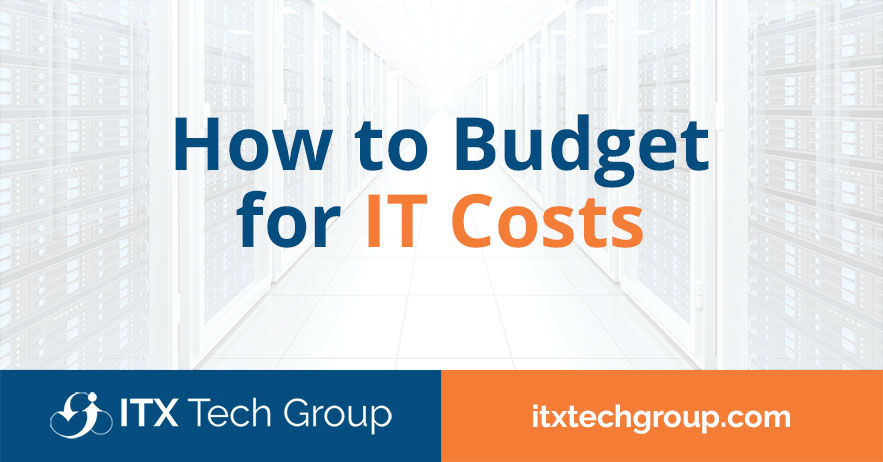In today’s technology-driven business landscape, budgeting for IT costs is crucial for companies to maintain a competitive edge, support growth, and ensure smooth operations.
However, IT costs can be complex and dynamic, making budgeting a challenging task for many organizations.
In this comprehensive guide, we will explore various steps and strategies to help companies effectively budget for their IT expenses, providing them with the financial foresight needed to achieve their technological goals.
Understand Your IT Needs and Objectives
The first step in IT budgeting is gaining a thorough understanding of your company’s IT needs and objectives. Assess your current IT infrastructure, identify areas for improvement, and align IT goals with overall business objectives.
Collaborate with IT managers and department heads to create a comprehensive IT roadmap that outlines the required hardware, software, and services to support your business growth.
Prioritize IT Initiatives
Once you have a clear understanding of your IT needs and objectives, prioritize IT initiatives based on their strategic importance and potential impact on the business. Allocate resources to high-priority projects that align with your company’s long-term goals.
This approach ensures that your IT budget is optimally used to drive growth and improve operational efficiency.
Analyze Historical IT Spending
Review past IT budgets and actual spending to identify trends and patterns in IT expenses. Analyzing historical data provides valuable insights into how IT costs fluctuate throughout the year and helps in making informed budgeting decisions.
Look for cost-saving opportunities and areas where adjustments can be made to optimize spending.
Involve IT Department in Budgeting Process
Your IT department is at the forefront of managing technology and understands the intricacies of your company’s IT landscape. Involve your IT team in the budgeting process to gain valuable insights and accurate estimates of upcoming IT costs.
Their input can help ensure that the budget aligns with the practical needs of the IT department and the overall organization.
Account for Upgrades and Maintenance
Hardware and software upgrades, maintenance, and license renewals are essential recurring costs in IT budgeting. Plan for regular maintenance and system updates to keep your IT infrastructure secure and up-to-date.
Additionally, consider future technology upgrades and their associated costs when creating your budget to prevent unexpected expenses down the road.
Consider Outsourcing and Cloud Services
Outsourcing certain IT functions or adopting cloud services can offer cost-saving benefits for companies.
Instead of investing in expensive infrastructure and maintaining in-house IT teams, consider leveraging cloud-based solutions or partnering with managed service providers.
Outsourcing can provide specialized expertise and scalable solutions, often at a lower cost than traditional in-house setups.
Build in Contingency
Unforeseen IT emergencies and changes in the business landscape can impact your IT budget. To account for these uncertainties, build in a contingency reserve in your budget. A contingency fund provides a safety net to address unexpected IT expenses without disrupting other financial plans.
Review and Adjust Periodically
IT budgeting is not a one-time activity; it requires ongoing review and adjustment. Regularly evaluate the effectiveness of your IT budget, track actual expenses against projections, and compare results to your initial objectives.
Analyze any discrepancies and make necessary adjustments to improve budget accuracy and optimize IT spending.
Wrap Up
Effectively budgeting for IT costs is a critical process that allows companies to strategically allocate resources to support business objectives and enhance their technological capabilities.
Understanding your IT needs, prioritizing initiatives, analyzing historical spending, involving the IT department, and accounting for upgrades are essential steps in creating a comprehensive IT budget.
Additionally, considering outsourcing, cloud services, and building in contingency helps companies adapt to unforeseen changes and emerging technologies.
Conclusion
By mastering the art of IT budgeting, companies can stay ahead in a rapidly evolving digital landscape, make informed decisions about technology investments, and drive sustainable growth while maintaining financial stability.
An agile and well-planned IT budget empowers businesses to unlock their full potential, optimize IT investments, and thrive in an increasingly technology-driven world.
ITX Tech Group has been serving small, medium, and large scale businesses with their IT support needs all over the United States since 2011, so we’re confident we can provide you with affordable, professional IT solutions for years to come!
Connect with us for a free consultation to discuss your business technology needs.

